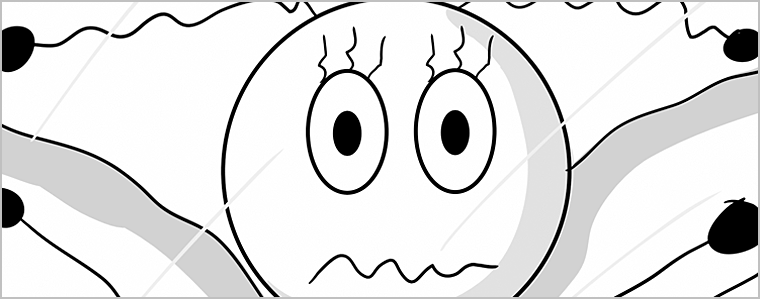
Some Days Are Bug Days Animation Process: Storyboard & Animatic
Welcome back! In the last post I showed you all my initial, very rough, storyboard idea sketches of Some Days Are Bug Days. After getting that rough idea down, the next step was to create a little bit more finalized storyboard in order to refine the story.
Let’s first talk a little bit about what storyboarding is and where it started. It is very common place nowadays across all media to use storyboards. Storyboards are a great way to visualize camera placement along with the staging of cast, props and background, and describe any camera movement, on-screen action, dialogue/voice over, sound effects, etc. that might take place. Storyboarding also allows you to experiment with how you might put the shots together to create a good storytelling sequence. This is a great pre-production tool saving a filmmaker lots of time and communication issues during production. This storyboarding process we use today was developed by Walt Disney Productions in the 1930s for animation. The first complete storyboard was for Disney’s Three Little Pigs (1933). Gone with Wind (1939) was one of the first live action films to be completely storyboarded. And now storyboards are used across all media.
Now let’s get back to Some Days Are Bug Days. Storyboards can be rough to more detailed illustrations. Since this was just an animation I was working on by myself, I saw no reason to spend a lot of time creating the latter so I chose to keep it rough and monochromatic. But, I wanted to refine the story a bit more from my initial rough idea storyboard.
I could have easily used pencil & paper to do this. But I had the opportunity to try out Toon Boom’s Storyboard Pro. This allowed me to create my storyboard entirely digitally with the use of my Cintiq which I was just starting to get used to as well. It also allowed me to create an animatic at the same time.
Animatics are basically storyboards in motion. They take the storyboard images created, edit them together into a sequence with some very limited animation and maybe some sound effects and dialogue/voice over. With this the filmmakers can get a sense of whether the sequence is working or not and the animators can get a sense of how long each shot might last. This helps cut down on production costs because then the animator isn’t animating the shot for 10 seconds when it should only be 5 seconds. In animation, that can be a lot of time and money.
Other software I could have used to accomplish this is Photoshop and After Effects, but Storyboard Pro allowed me to do it all in one program with the added benefit of being able to print out the storyboard easily as well.
So without further ado … here is the rough animatic for Some Days Are Bug Days.
I never thought I’d be sharing the animatic so, unfortunately, this rough animatic doesn’t have any sound effects or voice like it should. I lost that version of it through the process of working over the animatic through the animation & editing process. Lesson learned. 🙂
Coming up in the next post on the animation process for Some Days Are Bug Days I’ll talk a bit about the background and prop designs. If you have any questions feel free to comment here.
And Subscribe to my E-List here!

No Comments